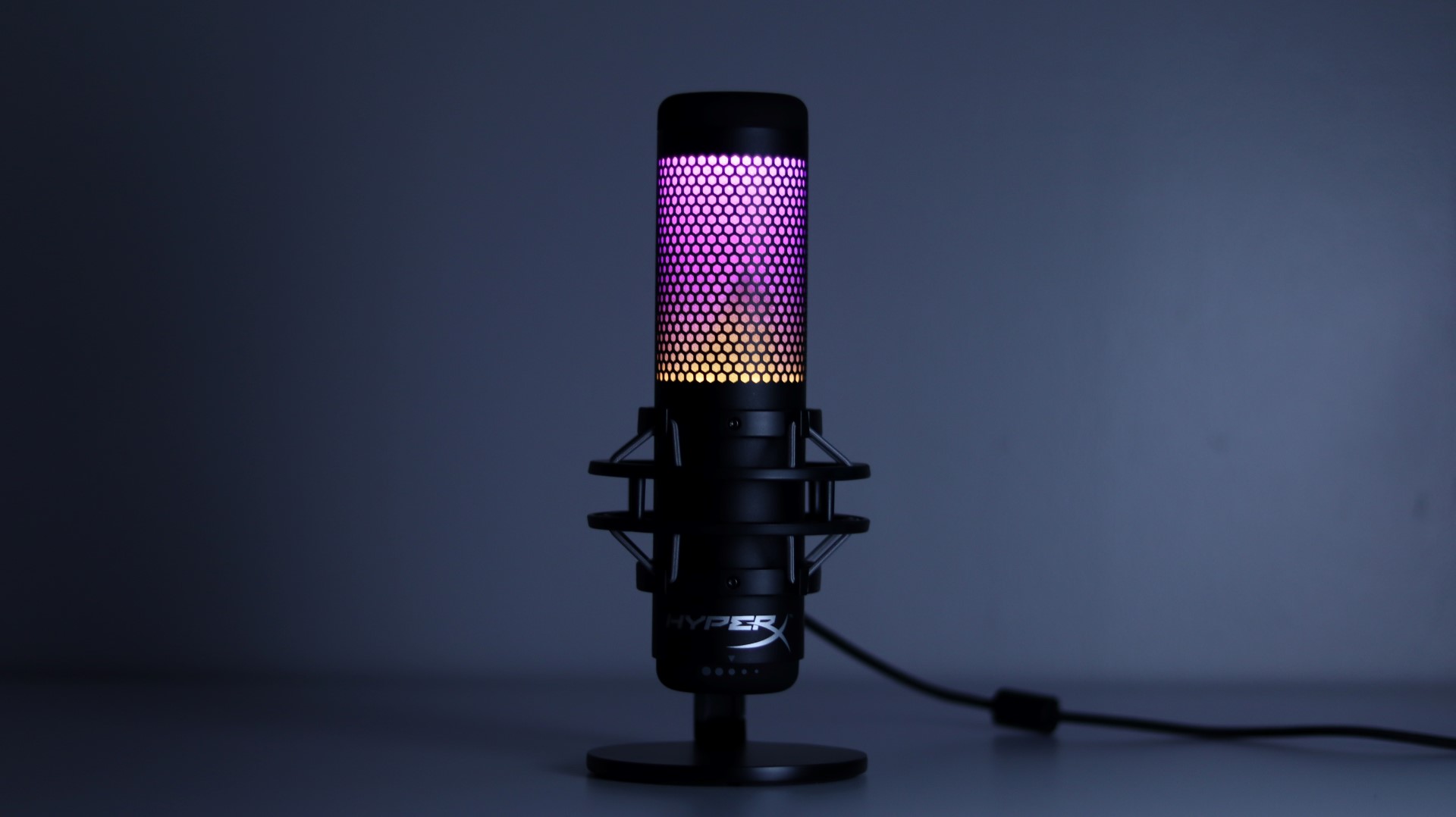QuadCast S Setup and NGENUITY
Setup of the QuadCast S couldn’t be easier, as it was quickly recognized by Windows and made available as a recording device. Simple tweaks to Discord and Streamlabs OBS were needed to make it our input device, but other than that, the HyperX QuadCast S was really a great example of plug-and-play. Now, we could leave the microphone just as it is and be perfectly fine, but the QuadCast S is supported by HyperX’s NGENUITY application, which offers a bit more control over some aspects of the microphone.
After installing NGENUITY from the Microsoft Store, we were prompted for a quick firmware update and to unplug and plug back in the microphone to get started. Once that was out of the way, we could then select the QuadCast S on the left side of the application, though we do wish it was given a less generic name than “Microphone”, and showed the true name here. However, once we selected the Microphone option it did show the correct product name at the top of NGENUITY.
The first section related to the QuadCast S is “Audio”, which makes sense, as this is an audio device. Here we get a visual representation of the current lighting of the microphone, as well as a few adjustment sliders. The first slider, “Mic Volume”, is actually greyed out, as is the toggle switch for this setting. We have a feeling that this is because of the physical dial controlling this feature of the microphone. Next up is Mic Monitoring, or sidetone. This setting adjust the amount of microphone sound is passed through to the 3.5mm jack, allowing you to hear what the microphone is picking up, along with any other audio being sent to this output. Last up is the Headphone Volume slider, which controls the overall volume of the 3.5mm audio jack. Additionally, we find four polar pattern icons, along with a short description of their use when the dial is physically set to a particular setting.
The “Lights” portion of the application allows you to customize the two RGB LEDs found in the body of the microphone. With just two LEDS to work with, the options are somewhat limited, but include Solid, Blink, Cycle, Lightning, and Wave. Each setting has a bit of customization that can be done to it, so pretty much everyone will be able to find a setting that fits their needs. You can also adjust the speed of multiple lighting effects for more precise adjustment.
Along the top-right section of NGENUITY are an Options and Presets button. Options allows you to decide whether or not you want the microphone to illuminate when muted or unmuted, as well as the LED brightness. This is a nice option for those that were stuck with a glowing red microphone when using the original QuadCast. We really wish you could use one lighting setting for when the microphone is live, and another for when it is muted. To us this seems like it would be a pretty easy implementation, and maybe we will see this in a future version of NGENUITY.
The Presets button allows you to set up multiple custom configurations for the microphone, which would be nice for cases where you might utilize a certain polar pattern and mic monitoring level in one location, and another set of levels when in another location.
QuadCast S Usage
In our time with the QuadCast S, we have used it in a variety of scenarios, trying out the various polar patterns. However, for our most common uses, streaming and podcast recording, the Cardioid setting is what we have defaulted to. In order to take advantage of the Cardioid pattern, we chose to install the included threaded adapter and mount the QuadCast on a standard microphone arm. This allowed us to have the microphone right in front of us for great audio pickup of our voice, and reduced audio pickup from our keyboard and mouse. This is especially important during our review, as we don’t test with NVIDIA RTX Voice enabled, which would cut out all of the background noise.
As we have noted in our previous microphone reviews, the sound quality improvement when moving from a headset-based microphone to a dedicated condenser-style microphone is night and day. Below is an sample audio recording from the HyperX QuadCast S, as well as some of our previously reviewed microphones.
HyperX QuadCast S
Elgato Wave:3
Corsair VOID Pro
Thronmax MDrill One Pro
Samson G-Track Pro
MXL BCD-1
MXL Tempo
HyperX QuadCast
Corsair VOID Pro









